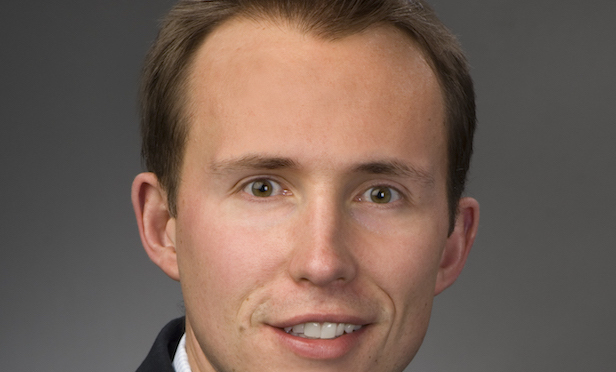 Chris Blanda, senior vice president with Columbus, OH-based financial services firm Lancaster Pollard
Chris Blanda, senior vice president with Columbus, OH-based financial services firm Lancaster Pollard
COLUMBUS, OH—The senior housing market, including assisted living and nursing home communities, continue to seek out capital and investment, despite the higher interest rate environment heading into 2019.
Chris Blanda, senior vice president with Columbus, OH-based financial services firm Lancaster Pollard that specializes in providing capital funding to the health care and senior living sectors, says lending and investment activity in the senior housing sector continues to be robust with no end in sight to the bullish conditions.
“I have been in the industry for almost 10 years and the capital environment generally, lending and investing, equity and debt has been as broad and robust as I have ever seen it,” Blanda says.
He says there are a host of drivers fueling the activity in the senior sector, including demographics and the “positive return characteristics of seniors housing and nursing homes.”
Blanda explains that senior housing, as a specialty asset class, has few rivals when it comes to the property's overall performance, which he describes as “much more juicier” than competing assets classes, such as multifamily, and has attracted significant capital to many properties.
“We don't see it tapering off anytime soon,” he adds. “If anything, there are more lenders, more specialty lenders launching every day, and there are more banks interested in seniors housing deals, both locally, regionally and nationally than there were last year.”
He notes that there are also new equity and hybrid junior capital sources that have entered the senior housing arena of late. Blanda relates that Lancaster Pollard does not expect anticipated higher lending rates to tamper investment and lending activity significantly in the senior housing sector going forward. In fact, rising rates could produce more activity, at least in the short term.
Blanda relates that the prospects of higher rates will prompt some senior property owners, particularly nursing homes, to lock in long-term rates before further rate hikes. He notes that the HUD Lean mortgage insurance program is really the only vehicle available for nursing homes seeking to secure long-term debt.
With the likelihood that rates increases will be incremental and will not rise significantly, he believes the higher rate environment will be a motivator for some senior housing property owners to seeking fixed-long-term debt, while the rates will not rise to the point where they will not make lending deals work.
Lancaster Pollard points to the highly successful HUD Lean mortgage insurance program, which finances seniors housing properties. HUD recently reported that for the fiscal year ending Sept. 30, 2018, the program closed $3.6 billion of loan volume, an increase of 6% compared to 2017. A total of 317 loans were closed during that period with 31 lenders.
The FHA Sec. 232/223(f) refinance program was the largest contributor to the volume as it processed 292 of the loans with a total loan amount of nearly $3.4 billion. Lancaster Pollard led all lenders in number of loans closed.
The firm leads all lenders in both total loans and par amount since 2010, with 670 loans totaling $5.4 billion in that period. Lancaster Pollard also closed eight construction loans totaling $71 million via the 241(a) program in 2018, more than any other lender, the company states.
Kass Matt, president of Lancaster Pollard, praised the HUD mortgage program's efficiency that has helped growth its popularity with borrowers, “It's no surprise the FHA Sec. 232 Lean program retains its popularity, as it provides low, long-term fixed rates that have benefited many of our clients. Even in a rising interest rate environment, we closed 70 loans through the program in 2018, totaling $619.1 million.”
Of the 70 closed loans, 60 were refinance or acquisition loans, while 10 were construction loans, involving one full new development project and nine property expansions.
© Touchpoint Markets, All Rights Reserved. Request academic re-use from www.copyright.com. All other uses, submit a request to [email protected]. For more inforrmation visit Asset & Logo Licensing.







